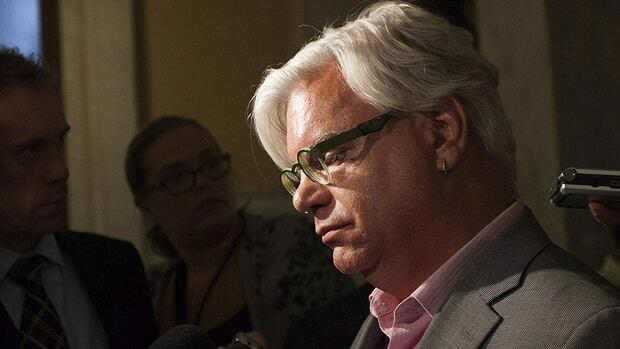CBC
Sun, October 8, 2023
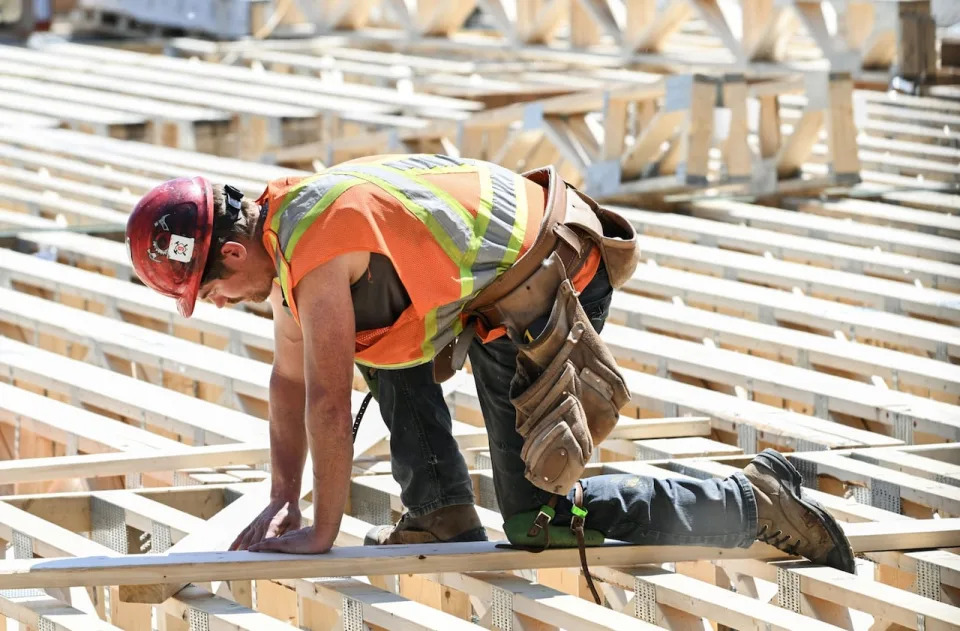
A worker at the site of a residential building under construction in Montreal, Quebec, Canada, on Wednesday, May 31, 2023. Canada's population is swelling, more than a million newcomers arrived last year, bringing attention once again to a shortage of housing stock and prompting some buyers to make aggressive bids. (Graham Hughes/Bloomberg - image credit)More
Despite a desperate need for new housing, Canada's developers are building fewer homes than they were at the height of pandemic lockdowns, a new study says – and experts say that could mean a generation of Canadians won't be able to afford homes for most of their adult lives.
Inflation and the Bank of Canada's response to it, has been the main reason for the slowdown, according to David Macdonald, a senior economist with the Canadian Centre for Policy Alternatives (CCPA).
The new decline in housing development started last year, when the Bank of Canada started to raise interest rates to cool the economy and combat inflation, Macdonald found in a new report for CCPA.
Compared to April 2020, when lockdowns shut down part of the development industry, investment in new single-family homes is down 21 per cent, the report says. New apartment construction is down two per cent from that time and row house development is down eight per cent.
"The impact of Bank of Canada rate hikes have been breathtaking," Macdonald wrote in his report.
They're also unsurprising, he says.
"If you have to take out a loan to engage in a type of economic activity, higher interest rates matter," Macdonald wrote.
"This means that higher interest rates increase carrying costs for businesses looking to build things like residential housing or consumers looking to buy those houses."
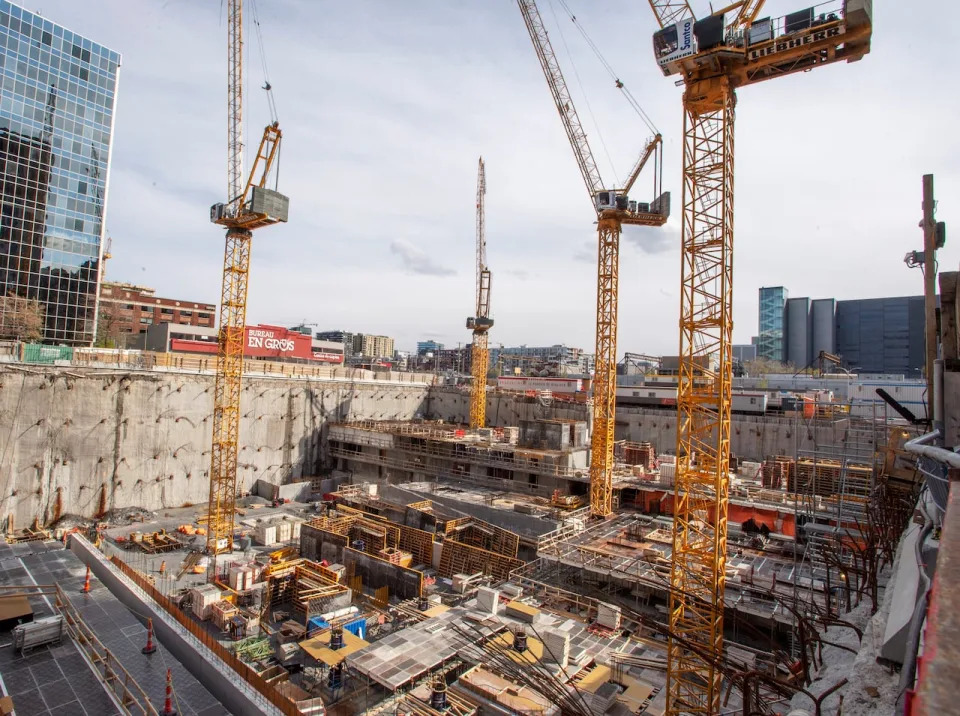
A 2021 Montreal bylaw requires developers to make a plan to include social and family housing for new developments. But, that hasn't quite worked out as politicians had planned. Compared to April 2020, when lockdowns shut down part of the development industry, investment in new single-family homes is down 21 per cent, the report says. New apartment construction is down two per cent from that time and row house development is down eight per cent. (Ryan Remiorz/The Canadian Press)
The Bank of Canada has raised its benchmark interest rate 10 times since March 2022, when it sat at 0.25 per cent. In that time, housing development has slowed substantially, Macdonald wrote.
The rate is now five per cent, and bank officials say they're prepared to raise it further if necessary.
Even if rates drop, developers and the housing market might not have seen the worst of existing hikes yet, Macdonald says. As fixed-rate mortgages are renewed under higher rates, he says development could slow even more.
'You could see a generation locked out'
The cool-down comes at a time when Canada desperately needs more housing.
Canada could need upwards of 3.5 million new homes built by the end of the decade, according to Aled ab Iorwerth, deputy chief economist with the CMHC.

Sherry Larjani is president of Spotlight Development. She says it's getting harder to turn a profit on housing developments as inflation stays high. (Ethan Lang/CBC)
He says Canada is nowhere near on track to meet that goal, and that means most Canadians, particularly those in major cities, will continue to struggle to afford housing.
"You could see a generation locked out of home ownership in Toronto, Vancouver, Montreal," said Iorwerth.
Some developers wary to invest
In the CCPA report, Macdonald says interest rates will only continue deterring private development.
The problem: from planning to approval to construction, housing developments can take five to 10 years before they're ready for residents to move-in.
With interest rates uncertain and costs changing quickly, projects are becoming riskier, some developers say.
"Many people in industry are…more cautious," Sherry Larjani, president of Spotlight Development in Toronto, told CBC Toronto.
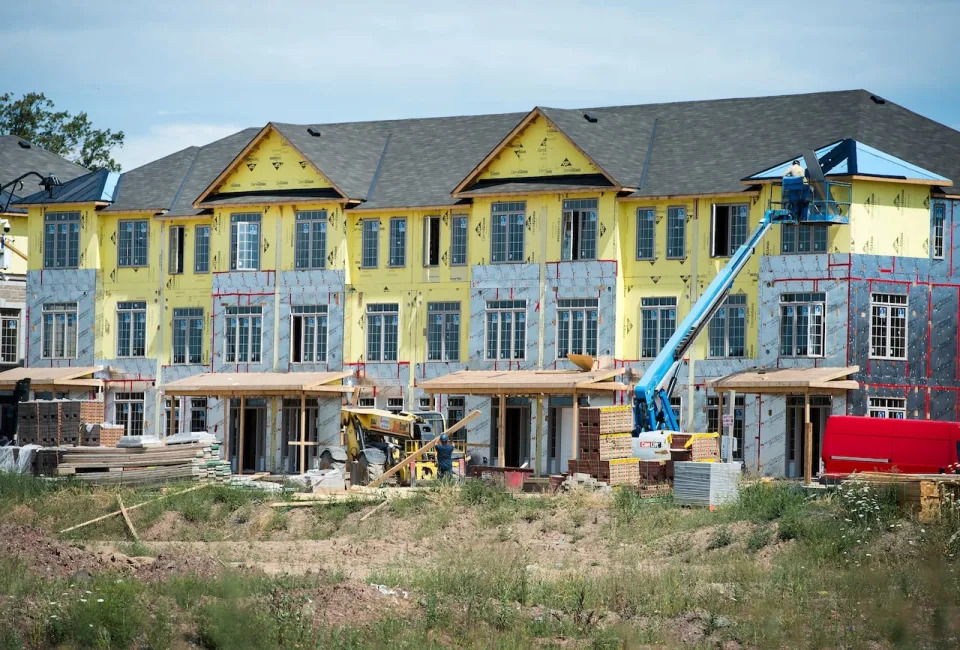
A task force urged the Ford government to impose increased density on single-family neighbourhoods in cities around Ontario as a means of boosting the housing supply to make homes more affordable. (Nathan Denette/The Canadian Press)
Larjani says high interest rates have also made it harder to find buyers, as extra costs are passed on and mortgage rates become less affordable and harder to predict. She says she's seeing some developers cancel projects as a result.
Lengthy approvals processes are also making things difficult, Larjani says.
"It's not only that the construction cost goes up, it's not only that the rates are up, it's not only that people can't afford their daily food and shelter – it is the fact that the government has not figured out how to streamline the process (to approve developments)."
A study published last September found approval timelines for GTA municipalities range from 10 to 34 months, with the average between 20 and 24 months.
Labour shortages are also delaying things, Larjani says, and that's costing her.
"We're paying on every day that we are negotiating or working on those projects," Larjani said.
Solutions unclear
There has been some government action to encourage development.
The federal government recently waived the GST/HST on the construction of rental housing in Canada, prompting some developers to say they would add thousands of units in the coming years. There's also the federal Housing Acceleration Fund that's providing money to municipalities with the goal of speeding up planning and development approvals in Canadian municipalities.
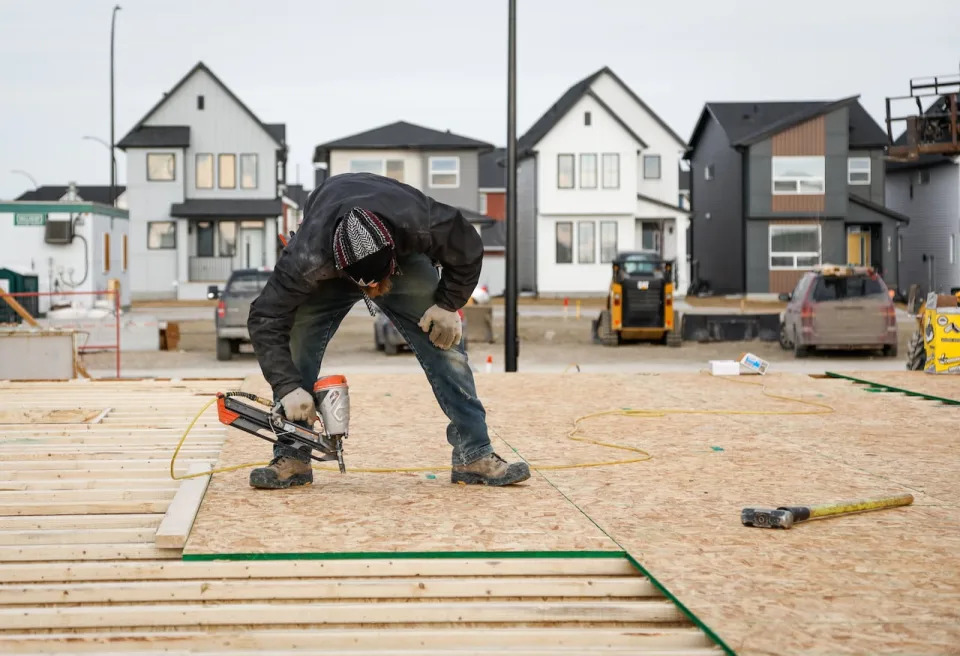
Framers work on a new house under construction in Airdrie, Alta., Friday, Jan. 28, 2022. (Jeff McIntosh/The Canadian Press)
In his CCPA report, Macdonald says governments need to start building public housing as private development stalls.
But Shaun Hildebrand, president of Urbanation, a consulting and research firm that focuses on condo and rental markets in Ontario, disagrees.
"I think relying on the government entirely to build social housing is unrealistic," he said in an interview.
He says the government doesn't have the tools that private developers have to build quickly.
Governments should partner with private developers to offer affordable housing, said Hildebrand, but the long-term solution is incentivizing and accelerating private housing developments – and lots of it. He says that will take big changes.
"Given the current trajectory for demand and supply, I would say it's unrealistic to expect that we'll see any real improvement in affordability over the next 10 years."








